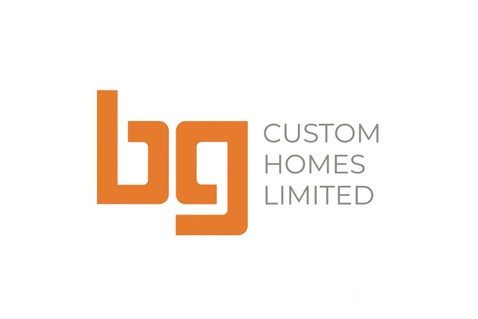Future-Proofing Your Home

Designing for Comfort, Health, and Longevity
When you build or renovate a home, you’re not just planning for today — you’re shaping how you’ll live tomorrow.
Future-proofing means making intentional design choices that improve comfort, safety, health, and long-term value.
Not every idea has to be implemented right away. Some are simply options to consider, depending on your goals, lifestyle, and budget. The key is to plan thoughtfully — so your home can adapt gracefully as your needs change.

The Three Phases of Retirement
It helps to think about how your home supports you through the natural stages of life:
- Go-Go Phase: You’re active and independent; stairs and upkeep don’t slow you down.
- Slow-Go Phase: You still live independently but start valuing convenience and reduced maintenance.
- No-Go Phase: Mobility becomes limited, and the layout and systems of your home become essential to your comfort and safety.
Designing with these stages in mind doesn’t mean overbuilding — it means leaving yourself options so you can age comfortably in place rather than being forced into expensive transitions later.

Defining Flex, Lifetime, and Adaptive Housing
Three major housing concepts can guide this kind of planning:
- Flex Housing: A concept introduced by CMHC, flex housing refers to layouts that can evolve with your needs — for instance, converting a home office to a bedroom, or future-proofing for a rental or caregiver suite.
- Lifetime Home: Built on universal design principles, a lifetime home remains safe and functional for people of all ages and abilities, with main-level living, wide doorways, and step-free entries — all while maintaining style and warmth.
- Adaptive Housing: Designed to easily accommodate future modifications such as ramps, lifts, or barrier-free bathrooms. Adaptive homes make future renovations simple and cost-effective.
Each approach can be customized to fit your space and budget. The goal isn’t complexity — it’s flexibility.

Low Maintenance = More Freedom
In retirement, freedom means simplicity.
A low-maintenance, efficient home gives you more time to enjoy life — and less time maintaining it.
If your budget allows, consider:
- Durable materials like metal roofing, composite siding, and PVC trim.
- Simple, reliable mechanical systems that are easy to service.
- Well-drained site design to minimize exterior maintenance.
The less your home demands of you, the more it gives back.

Comfort and HVAC Options
True comfort begins with the air you breathe.
HVAC (Heating, Ventilation & Air Conditioning) systems regulate temperature, humidity, and air quality — quietly shaping your daily wellbeing.
A well-designed, fully ducted, and balanced system can:
- Filter dust and allergens continuously.
- Maintain consistent, comfortable temperatures year-round.
- Control humidity for optimal health and air freshness.
- Operate quietly and efficiently.
If budget allows, a variable-speed, multi zoned HVAC system can keep every room at its ideal temperature automatically — ensuring a perfectly conditioned home, summer or winter.
For additional resilience, consider a standby generator or battery backup so your home stays safe and comfortable during power outages.

Total Environmental Control
When a high-performance building envelope (insulation, windows, air-sealing) is paired with a well-engineered HVAC system, you achieve what builders call total environmental control:
- Consistent indoor comfort
- Filtered, clean air
- Stable humidity
- Whisper-quiet operation
Your home automatically manages comfort so you don’t have to.

Natural Light, Circadian Rhythm, and Wellbeing
Natural light has a measurable impact on health.
Your circadian rhythm — your body’s natural 24-hour clock — regulates sleep, energy, and mood.
Simple design considerations can make a big difference:
- Orient living spaces for morning light exposure.
- Use skylights or clerestories to bring daylight into deeper areas.
- Consider tunable LED lighting that adjusts tone and brightness throughout the day.
Homes designed around natural light help you wake up more refreshed, stay focused, and rest more deeply — small shifts that have big effects on long-term wellbeing.

Healthy Home Concepts
If wellness and comfort are part of your vision, you may want to explore:
- Air Quality: HRV/ERV ventilation systems and low-VOC finishes.
- Water Quality: Whole-home filtration for clean, safe water.
- Acoustics: Sound separation and acoustic insulation for peace and quiet.
- Thermal Stability: Triple-glazed windows and airtight walls for consistent comfort.
- Biophilic Design: Natural materials and greenery that connect the indoors to nature.

Attached Garages and Safe Access
An attached garage is an often-overlooked but important element of aging-in-place design.
It provides level, weather-protected access and minimizes slips and falls in icy conditions.
It can also serve as secure storage, a workshop, or future mobility transition zone — adding practicality and long-term value to your property.

Energy Efficiency and Long-Term Value
Energy costs are unlikely to decrease — so efficiency is both a comfort and investment strategy.
Options to consider:
- High-performance wall assemblies (R35–R45+).
- Triple-glazed, low-E windows.
- Geothermal or air-source heat pumps.
- Solar integration for energy independence.
A Real-World Example
A study by the Lawrence Berkeley National Laboratory (LBNL) examined measured savings from deep energy retrofits in single-family homes.
They found that combined upgrades — including insulation, air sealing, and HVAC improvements — achieved energy savings of up to 42%, with payback periods averaging 10–12 years (source: Measured Energy Savings and Economics of Retrofitting Existing Single-Family Homes, LBNL, 2022).
In practice, that means a $25,000 energy upgrade package producing around $2,500 in annual savings will pay back within a decade. Over a 20-year period, those compounded savings can exceed $70,000, while also improving comfort, air quality, and quietness.
Lawrence Berkeley National Laboratory (2022). Measured Energy Savings and Economics of Retrofitting Existing Single-Family Homes.

Intelligent Home Automation (Optional)
True intelligent automation is more than gadgetry — it’s about convenience, safety, and peace of mind.
Using IFTTT (“If This, Then That”) logic, home systems can automatically adjust to your environment:
- If motion is detected at night, pathway lighting activates.
- If air quality drops, ventilation increases.
- If indoor temperature fluctuates, blinds or heat pumps adjust automatically.
- If solar output exceeds usage, power is stored efficiently.
These features can be implemented gradually, aligning with your comfort level and budget.

The Tye Farrow Case Study — Design That Heals
Architect Tye Farrow, in Constructing Health: How the Built Environment Enhances the Mind’s Health, has demonstrated how thoughtful design directly improves health and cognitive wellbeing.
In one case study, his team redesigned a Canadian healthcare facility with abundant daylight, organic materials, and natural views. The results were remarkable:
- 30% fewer anxiety-related incidents.
- Improved sleep and appetite among residents.
- Higher staff satisfaction and reduced turnover.
While this example comes from healthcare, the same principles apply at home. Design choices like natural light, warm materials, clean air, and visual connection to nature have been shown to lower stress hormones and enhance happiness— outcomes that last a lifetime.
Tye Farrow (2020). Constructing Health: How the Built Environment Enhances the Mind’s Health.

Retirement Living vs. Aging in Place
The financial benefits of aging in place are significant.
In Nova Scotia, the average cost of a private retirement residence ranges between $3,000 and $6,000 per month for basic living, and $6,000 to $10,000 per month for higher levels of care — often $40,000 to $100,000+ per year.
By comparison, maintaining your own home — even one built to higher accessibility and energy standards — typically costs far less annually.
A one-time investment of $30,000–$70,000 in accessibility and comfort upgrades can often pay for itself after just one to two years compared to institutional living costs.
Beyond the financials, aging in your own home preserves independence, privacy, and emotional wellbeing — benefits that no facility can match.

You Deserve an Excellent Quality of Life
Your home should make life easier, healthier, and more enjoyable.
Clean air, natural light, steady temperatures, and reliable systems all contribute to a sense of calm and security.
You’ve earned a home that supports you physically, mentally, and financially.
Future-proofing isn’t about spending more — it’s about building smarter so your home serves you beautifully for decades to come.

Moving Forward
At BG Custom Homes, we view these as options worth exploring — not requirements.
Whether you’re interested in high-performance energy systems, aging-in-place features, or health-focused design, we can help you evaluate what makes sense for your life and budget.

Let’s Talk About Your Future Home
Every family, site, and budget is different — and that’s exactly where the conversation starts.
Future-proofing isn’t a one-size-fits-all formula; it’s a thoughtful process of exploring what matters most to you. Whether that means creating a home that adapts as you age, designing for better comfort and health, or simply keeping operating costs low, we can help you find the right balance between what’s smart today and what’s sustainable tomorrow.
If you’d like to explore how these ideas could fit into your next project, we’d love to start that conversation — no pressure, just possibilities.
Because building a home that’s truly designed for life begins with one good conversation.
Start A discussion
BG Custom Homes Limited
3667 Strawberry Hill Street, Halifax, Nova Scotia B3K 5A8, Canada
This website uses cookies.
We use cookies to analyze website traffic and optimize your website experience. By accepting our use of cookies, your data will be aggregated with all other user data.
